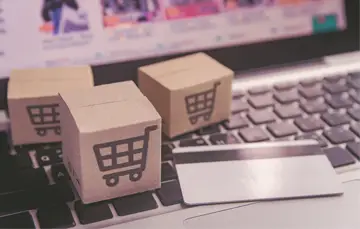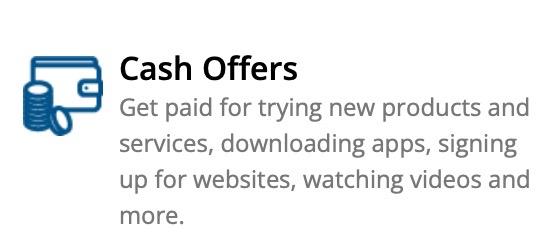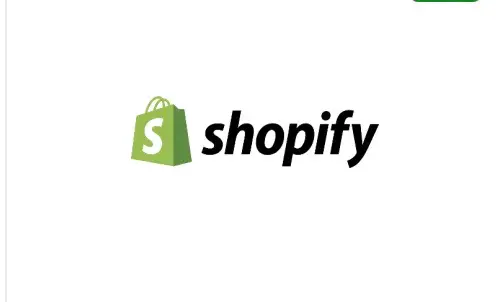start an online store
If you want to start your own online store, there are many things you need to consider. How will you create an online store, for example? On this page we tell you everything you need to know on how to start an online store: from registering a website and buying products, to keeping inventory, to selling online and promoting your ecommerce business.
Launching an online store
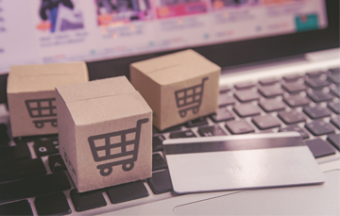
If you already sell online often (on marketplaces or Facebook groups, for example) it can be interesting to start your own small business with an ecommerce platform. Most people who want to create an ecommerce store already have a business idea, or know which products they want to sell.
But if you do not have a clue yet, you should decide this first. The choice of your online shop’s key product range will strongly impact how you structure your ecommerce website, organize your warehouse and set up your marketing strategies.
Software to create an online store with
In order to launch an online store, you need to use ecommerce software or an online store builder. Do you want to make your own website? You could have a look at open source software, in which you can modify the source code to personalize your website.
‘Build you own ecommerce site with web hosting or open source software.’
Another option is web hosting. Hosted software is owned by a company. It is a great option for those of us who are not skilled at programming. These software providers usually offer an ecommerce template in which you can drag and drop features that you want to use.
Take some time to do your research, make use of the free trial options and compare the different providers that are available. Which features should be included in your software? Can your store grow easily or expand internationally with this solution?
Here are three popular ecommerce software providers:
Webador
With no technical knowledge required, Webador‘s user-friendly drag-and-drop website builder is ideal for launching a webshop. Easy to use steps make it easy to customize your site yourself. Normally a steal at just €9 per month, users can now get started for a promotional price of €1 per month.
Shopify
Shopify is also a cloud-based ecommerce platform, powering over 1 million online businesses worldwide. Shopify can be used to sell products online and in person. It offers built-in tools to help you create and analyze digital marketing campaigns, and offers a single dashboard to manage orders, shipping and payments.
Lightspeed eCommerce
Lightspeed eCommerce is a cloud-based solution to buy an online store with, that is extra convenient for omnichannel retailers. It enables them to manage in-store and online inventory, view all customer information and analyze multi-channel sales data, all from one system.
Which products will you sell online?

The core of every online store is, of course, the products. The type of items you sell determines your business model. For example, if you sell items that are currently trending, you could generate some serious revenue in a very short time. But then what will be the long term plan for your store? And if, on the other hand, you sell some very niche items that only attract collectors or diehard fans, it could mean that your items stay in your warehouse for a very long time. Can you afford this?
Additionally, you should think about where you will buy these products. Will you buy products from a dropshipping supplier, who directly sends them to your customers? This means that you will not have to store any items, as you are not buying in any stock.
Will you import your products or buy them locally?
Or do you know a local dealer, for example? Are you in contact with the manufacturer? Do you need to import your items from China, or maybe another EU country? Then certain local rules may apply. Please, again, do your research. You can not just import a shipload of items from China without doing any paperwork.
Looking for ecommerce software to start selling in Europe? Webador and Shopify are platforms that are well optimized for cross-border ecommerce.
Where do you store your products?

If you have made a decision about the type of products you want to sell and where to buy them, you will need a place to store these items. Most small online business owners start out with buying goods at a wholesale price and then store them at home. When sales go well, they buy more and eventually start renting a warehouse storage space.
But when things are really starting to lift off, you could look at other solutions. Another company can store and send your orders for you. This is called ecommerce fulfillment. There are businesses specialized in doing this: storing and fulfilling orders for others. Large marketplaces like Amazon, for example, also offer such fulfillment services. Again, do your research and try comparing several e-fulfillment service providers to see which one suits you best.
Another company can store and fulfill the orders.
How will you send your orders?
When you know which items to sell and you have found a place to store them, it is time to ship them. You might already know how to send a parcel. What if you receive a massive amount of orders? Shipping costs can become quite high if you have to pay for each seperate parcel with a courier.
Picking and packing each item can also take a lot of time, especially when your business is becoming popular. How will you ship tons of items to customers across the country, or maybe even abroad? Look at parcel deliverers or couriers that offer a fixed monthly rate for sending out parcels.
Do you want to send a parcel, or maybe a lot more, to customers all over Europe? With Sendcloud, anyone can easily ship their products.
How will your customers pay you?

An important part of the buying process is accepting payments. Your customers need to pay for your products! But how will they do this? You need to offer several payment methods on your checkout page.
You could offer just one payment method, but this isn’t customer friendly. Because every customer is different: some like to pay with PayPal, others want a website to accept credit cards. Some like to pay beforehand, while others only want to pay when the goods have arrived. Dutch ecommerce laws even oblige online retailers to offer at least one payment method that gives customers the opportunity to pay after receiving the goods.
‘Before your first sale, you will need to sort out payment methods for your website.’
The easiest way to list multiple payment methods on your ecommerce site is by enlisting a payment provider. They have contracts with several payment methods and services, which makes it easy to integrate them into your sales channels. These providers are also able to process online payments in a secure way, so that you will not have to worry about receiving your money.
Looking for a European payment processor? Try Mollie! You only pay for successful transactions, so no minimum costs, lock-in contracts or hidden fees. Sign up now!
How do you attract potential customers?

A business can not survive without attracting customers, as they are the ones buying your products and thus giving you your revenue and, hopefully, your profits. But how do online businesses attract customers?
You can start by notifying your family, friends, relatives, and colleagues about your website, but you can also start by spreading the news through social media marketing. This can both happen organically or with paid posts.
Hopefully, you will even attract some repeat customers. Make sure that your website is intuitive, so that visitors can easily find your product categories and check out.
Start driving traffic
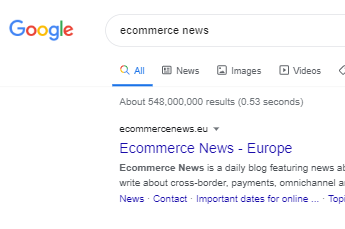
One of the bigger challenges for online stores is to gain visitors by being visible in search engines like Google. Again, this can both happen organically, with search engine optimization (SEO), or with paid posts. This is called search engine advertising (SEA).
Increasing your store’s visibility in Google is quite a challenge and thus a chapter on itself. But software and content play a huge rol in that. Therefore, it does not hurt to check if your software is built according to the guidelines of Google. If you write your own content, read up about the basics of SEO and SEA as well.
When you have visitors, the next step is to turn them into paying visitors. You need to convert visitors into customers. This is called conversion rate: the number of visitors who do something you want (in this case: buy something) out of the total number of visitors. On average, an online shop has a conversion rate between 2 and 4 percent. This means that if 100 people visit an online shop, 2 to 4 of them leave the shop while having bought something.
On average, an online shop has a conversion rate between 2 and 4 percent.
The business structure
You also need to make a decision about the type of business you want to start. Will it be a sole proprietorship, a private limited company, a public company, a partnership or something else? This decision will influence your taxes and liability.
For example, in the Netherlands a sole proprietor can claim various tax allowances, making a part of your profit tax-free. The profit made by a private limited company is subject to corporation tax, which is a significantly lower rate than income tax.
As a sole proprietor, you are liable for your company debts.
As a sole proprietor, you are personally liable for your company debts. If you operate your own business as a private limited company the company assets and your private capital are separate.

Which domain name will you use?
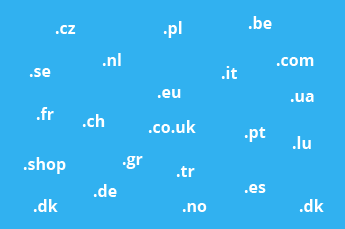
Now, after choosing your software, products and business model, comes the most fun part! What is going to be the name of your website? And which top level domain (the abbreviation after the dot) will you use?
Will it be a .com website, a .eu website or maybe some local ‘TLD’ like .fr (for France), .de (Germany) or .co.uk (the United Kingdom)?
Is your business cross-border proof?
With regards to the business and/or domain name, try to find one that, one day, can also work in other countries and different languages. If you start your business in the Netherlands, for example, under a very typical Dutch name it may be hard to enter another market in Europe. This is the reason why Dutch shipping platform Jet Verzendt (translation: “Jet Ships”) changed its name into the more international-sounding brand KeenDelivery in 2017.
Try to find a business name that also works in other countries, in case you will launch an online store abroad.
Know the local rules
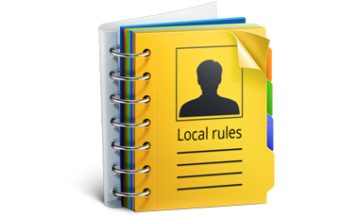
It’s important to know how to start with an online store, but it’s also very important that you know all of the rules that apply to you in the country you’re based in.
For example, do you need to be registered at the local chamber of commerce if you want to start an ecommerce store? Can you be based in another country? If so, what extra rules apply then? How should you charge a sales tax?
VAT rules in the EU
When you begin an online store located somewhere in the EU and you ship goods (and services) to other EU member states, you need to pay a sales tax, or VAT (value-added tax). Consumers pay it as part of the product price and as a retailer you pay it to the authorities. This makes it an indirect tax.
If you are going to sell cross-border, you should look into the VAT rules within the EU. If you are based within the EU and make less than 10.000 euros with cross-border sales, you are allowed to charge the VAT rate of the country you are situated in to all customers you ship to. They only need to fill in their local tax return forms.
Find out which VAT rules you need to follow.
If you make more than that amount, the rules get a bit more complicated. Find out what applies to your business and make sure that you are operating according to the rules.
You have launched your online store… now what?

Your online store is up and running after choosing the right software, buying and storing products, setting up an online marketing strategy and gaining traffic through search engines and social media. Congratulations! But now what?
Now, it is important to keep it going. Do not sit still. Do not get distracted by your first revenue. Keep investing. Keep adapting. Keep improving. Try to find the bottlenecks in the customer journey. On which pages do visitors leave your website most often? How can you prevent this from happening?
Try to find new ways to promote your shop. Try to pump up that very important conversion rate. And what does your online store do after sales have taken place? How can you make sure that customers buy something again?
Frequently Asked Questions
Below you can find some frequently asked questions about how to start an ecommerce business. Hopefully the answers will help you get started with launching and running your online store!
What do I need to start an online business?
As you may have read above, there are plenty of things you need to think of when you want to launch a store online. Basically, you will need:
- products to sell (you can stock them in your warehouse or sell and ship them through dropshipping)
- software on which your online store runs
- knowledge about (local) rules that apply to online retailers
Furthermore, in order to run a successful online store, you will need to optimize your ecommerce website with unique product descriptions, clear product photos, great landing pages and of course interesting products and prices! And don’t forget the efforts you need to put in good marketing. You can have the best online shop in the world, but if no one in your target audience knows about it, you will not generate sales…
How much does it cost to run an online store?
Running an online store does not have to be expensive. You can use a free trial or even use commercial ecommerce software for free (as long as you don’t sell more than X items). And there os also open-source software which you can download for free and host on a server.
If you choose dropshipping, it does not cost thousands of euros to have your online store filled with all kinds of products. That is because you only pay for products that your customers order. And if your selling price is higher than your purchase price, you will have a good profit margin.
But, running a great online store is a different ball game. If you want to have success with your online store, you will have a hard time achieving this without making some serious investments. Investments in your software, your marketing, your products, et cetera.
How do I find products to sell online?
A good starting point if you want to know how to find products to sell online might be a wholesale platform or marketplace. Here you can get inspired by what is offered and directly contact the wholesaler of vendor.
Maybe these vendors also have products that you had not thought about yet! Also, check out the dropshipping suppliers in Europe.


